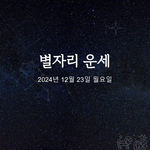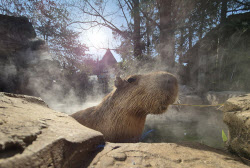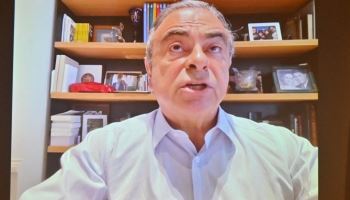진위여부는 상관없다. 몇 개의 단편적인 정보만으로도 사람들의 눈길을 사로잡을 수가 있는 것이다. 알제리를 생각해보자. 무엇이 떠오르는가? 먼지투성이에 위험하고, 외국인들에게 적대적인 정서가 떠오르지 않는가?
그 정도의 정보라면 관광객들에게 이미 목적지를 바꿀만한 충분한 이유를 만들어 준 셈이다.
사람들은 다양한 나라들에 대해 특정한 인상을 갖기 마련이다. 사실 아무런 인상이 없는 나라는 손에 꼽아보기 힘들 정도다. 간혹 그런 나라도 있긴 한데 내겐 그린란드가 그러하다. 그린란드 하면 내 머리 속은 온통 눈으로 하얗게 덮여온다. 다른 사람들에게서 그런 얘기를 들어본 적도 없다. 어쨌든 그 나라는 결코 녹색창연하지 않을 거라는 게 나의 생각이다.
기업들은 이미 오래 전부터 이 같은 사실을 간파해왔다. 소비자들은 그들이 인지하고 있건 그렇지 못하건 간에, 어떤 인상에 따라 구매 의사를 결정한다.
기업의 이윤은 그 기업이나 상품 혹은 서비스의 특성에 따라 오르락 내리락 하게 마련인데, 그 특성이란 것은 바로 소비자들의 수요와 요구가 소비자에게 남겼던 인상이 만나는 지점에서 결정된다. 그러나 그 특성은 명확하게 파악되지 않는다.
비결은 중첩의 지점에서 긍정적인 인상이 나오도록 이끌어주는 것이다. 그 것이 바로 브랜드의 역할이다.
만약 누군가 세상에 단 세 명만이 알고 있는 극비의 비법으로 만들어진 갈색의 설탕음료를 내게 권한다면 난 결코 입을 대려하지 않을 것이다. 하지만 사실 난 언제나 이 음료를 마시고 있다. 왜? 세계의 넘버 원 브랜드, 코카콜라라는 이름이 붙어있는 까닭이다. 이처럼 브랜드는 상품적 값어치를 좌우하게 된다.
지금 한국은 자국을 브랜드화해야 하는 시점에 와 있다.
우리의 상품-한국-은 소비자의 마음속에서 차별화될 필요가 있다. 만약 누군가 여행사로 찾아가 아시아의 허브 패키지 여행 상품을 추천해달라고 했다 하자. 이때 여행사 직원이 “어디로 가시려고 그러시는데요? 싱가폴, 홍콩, 상하이, 인천, 부산, 군산, 여수, 목포, 중구 중에 어딜 가실 건가요?”라고 되묻는다면, 무슨 의미가 있겠는가.
한국의 브랜드는 또한 우리가 매혹하고자 하는 사람들에 맞춰져야 한다.
만약 한국의 브랜드를 알려 주요 관광객으로 유치하고자 하는 고객층이 20대 미혼의 남자들에게 맞춰져 있다면, 그들에게 관광 상품으로 조선왕조 학술적 이미지로는 그들의 감성을 자극하기 힘들 것이다.
따라서 가장 중요한 점은, 브랜드가 그들의 수요를 감각적으로 자극시키는 느낌을 줘야 한다는 사실이다. 한국의 이미지가 다른 관광 지역과 차별화되고 해당 목표층에 적절하게 맞춰졌다 하더라도 사람들의 인상을 찌푸리게 한다면, 아무 소용이 없는 것이다.
사람들이 우리를 어떻게 알아줬으면 하는지를 생각하기 전에 우린 먼저 한국이 무엇을 원하는 가를 알아야 한다.
여기 그 실례와 반례가 있다.
-아일랜드: 1995년 아일랜드 정부는 전문 기업과 손을 잡고 브랜드 작업에 착수, 3000만 불을 들여 세계적인 마케팅 캠페인을 벌였다. 그 결과 한 때 침체된 유럽 변방국에 불과했던 아일랜드는 이제 켈트족의 호랑이로 간주되고 있다.
-스페인: 80년대에 스페인은 가난한 독재국가에서 현대적인 민주국가로 대 변신하였다. 관광산업의 이미지 역시 호안 미로라는 예술가가 주창한 ‘태양 아래 모든 것’이라는 슬로건 아래 새롭게 탈바꿈했다. 다만 그 브랜드화의 노력이 실제 관광산업의 발전에 필수불가결한 요소였는지에 관해서는 논쟁의 여지가 있다.
-코트디부아르: 아프리카의 코트디부아르는 세계 커피 시장의 40%를 차지하고 있다. 하지만 품질이 조악하여 다른 커피와 함께 섞여 팔리는 것이 보통이다. 반면 콜롬비아는 코트디부아르와 비슷한 시장 점유율을 갖고 있지만 높은 가격에 커피를 판매하고 있다. 차이는? 브랜드에 있다. 콜롬비아는 지난 25년 동안 후앙 발데즈와 노새의 이미지로 판매를 계속 하고 있다.
-그리스: 올림픽과 월드컵을 유치하는 국가에겐 돈으로 살 수 없는 홍보의 기회가 주어진다. 2004 아테네 올림픽을 2000년 시드니 올림픽과 비교해보자. 그리스는 브랜드를 개발하고 알리는 데 실패했다. 정부가 관심을 보이지 않은 탓이다. 그 결과는? 이미지도 개선되지 않았고, 지난 한해 동안 관광산업과 무역, 투자 어디에서도 진전을 이루지 못했다.
한국은 우선순위를 정하고 고유의 판매 전략을 세워야 한다. 또 이를 통해 여타 경쟁국가와도 국제적으로 차별화되어야 한다.
`방글라데시: 지구의 지붕`이라던가 `카불: 언제나 여름`과 같은 브랜드는 적절하지 못하다.
또 "아름다운 울산"(항구도시)처럼 요점이 없는 브랜드나, 아무 의미도 없는 "하이! 서울", 포부만 가득한 "평양:투자자들의 천국"과 같은 브랜드 역시 의미가 없다.
한국은 선진경제, 인터넷강국, 맛나는 음식, 활력 넘치는 사람들, 태권도, 세계수준의 영화, 한류의 견인차인 드라마와 같은 긍정적 요소들을 한껏 부각시키고 부정적 요소들을 가려주는 브랜드를 개발해야 한다.
여기까지 읽은 독자라면 내가 브랜드 주제나 슬로건을 제시하지 않으려고 상당히 노력하고 있는 것을 알 수 있을 것이다.
하지만 이런 가정을 해보자. 한국인들은 자국의 이미지가 40년의 개발기를 거쳐온 성장국가의 이미지로 인식되기보다는 환경보호주의의 모델이 되길 바란다고 생각해 보자.
우리의 브랜드 주제는 `푸른 한국`이 될 것이다.
정부의 개발정책 역시 DMZ 계획, 습지보존, 간척사업, 도시재개발계획 등에 걸쳐 푸른 한국이란 브랜드에 걸맞도록 조정될 것이다.
정부는 환경보전을 위한 연구를 촉진하고 이에 부응하는 기업들에 보상을 줄 것이다. 지자체는 자전거도로를 만들거나 산책로를 조성하고 환경친화산업을 지원할 것이다. 녹색의 관광산업은 큰 변화를 가져올 것이다. 도시는 살기 좋은 거주환경을 만들기 위해 노력할 것이고, 관광객들은 "서울: 깨끗한 도시"로 모여들 것이다.
그럼 "한국:아시아의 축"이라는 브랜드는 어떨까? 물류와 편의성을 강조해야 할 것이다. 금융의 허브가 되기 위해 필요한 단계를 밟아 나갈 것이다. 관광 슬로건으로는 “세계 모든 나라로 통하는 곳” 정도가 어떠할까.
물론 녹색과 축, 두 가지를 함께 갖고 가지 못할 이유는 없다. 여하튼 한국이 브랜드화 되고자 한다면, 포부를 밝힐 것이 아니라 선택을 해야만 하는 것이다.
마이클 브린(인사이트 커뮤니케이션즈 컨설턴츠 대표이사)
<영어원문>
Column Title: What is Korea’s Brand?
In tourism, a little bit of knowledge can be bad for business.
A couple of facts, true or false, are all that’s needed to keep people away. Consider Algeria. What comes to mind? Dusty, dangerous, anti-foreign violence?
That’s all you need to decide to visit somewhere else.
We feel something about most countries. In fact, you might be hard-pressed to name a country that you don’t have impressions of. Greenland is one rare case for me. It’s a sheet of snow in my mind. I don’t think I’ve ever heard anyone mention it. My only thought is that I bet it’s not green.
Companies have long understood that, with or without knowledge, people form the perceptions which determine their attitudes and purchasing behavior. Profits rise and fall at precisely this point &8211; where a consumer’s needs, desires and perceptions meet. And this place is elusive.
To this end, it’s high time Korea branded itself.
Our product -Korea- needs to be differentiated in the consumer’s mind from other countries. It’s no use if she walks into a travel agency and asks for a package tour to the Hub of Asia, to be asked, “Which one? Singapore, Hong Kong, Shanghai, Incheon, Busan, Kunsan, Yeosu, Mokpo or Jung-gu?
Also, our brand must be relevant to the people we’re trying to attract. We can’t sell young single males on the Yi Dynasty. And, most important, to accept our brand, the consumer needs to feel good about it. Korea may be different and relevant, but if people feel bad about it, they won’t buy.
Before we ask ourselves what we want people to know, we have to know what Korea itself wants.
Here are examples of countries that have and haven’t done it.
-Ireland: In 1995, the Irish government set up a brand entity in partnership with the private sector and invested $30 million in a global marketing campaign. Once a dreamy backwater on the edge of Europe, Ireland is now seen as the Celtic Tiger.
-Spain: In the 1980s, Spain changed from being a poor, backward dictatorship into a modern, democratic state. The image for tourism changed, too, helped by a brand designed by Spanish artist Joan Miro with the slogan "Everything Under the Sun." It is arguable that the tourism industry would not have developed, and with it the country, without the unifying effect of this brand.
-Ivory Coast: This African state has around 40 percent of the international coffee bean market. Its beans are seen as low quality and are usually blended with other beans before being sold. Colombia, on the other hand, has a smaller market share, but sells its coffee at premium prices. The difference? Branding. Colombian coffee has been sold under the Juan Valdez and his mule image for the last 25 years.
-Greece: The Olympics and the World Cup provide hosts with a measure of international exposure that cannot be bought. Look how well Sydney came out of 2000 compared with Athens in 2004. Greece failed to develop its brand because no part of government saw it as its job. The result? No increase in image, tourism, trade or investment in the last year.
What Korea needs to do is identify a priority that gives its Unique Selling Point and by which it becomes identified internationally and distinguished from its rivals.
It is important to accept that a brand must be based on reality. It may be aspirational, but it must be honest. You can’t have, say, “Bangladesh: Roof of the Earth” or “Kabul: Every Day is Summer.” Nor can you have a brand that misses the whole point, like, “Beautiful Ulsan” (the Korean shipbuilding city), or says nothing (“Hi! Seoul), or is way too aspirational “Pyongyang: Investor Paradise.”
The approach for Korea should be to leverage the positive-advanced economy, wired city, great food, vigorous people, taekwondo, cool movies, sweet soap operas- under a broad theme that captures the essential qualities while also reflecting the aspirations of citizens, and by so doing, overshadow the negative.
As you can tell, if you’ve made it this far in the column, I’m desperately trying to avoid suggesting a brand theme or slogan. But let’s make suppose that our research shows that, following 40 years of development, Korea’s citizens want, above all else, that their country be a model, not of more growth, but of environmentalism.
And that this is how they want to be distinguished from other Asian states. There is our brand theme: “Green Korea.” Now, government projects, like the plans for the DMZ, the preservation of wetlands, reclamation projects, urban renewal schemes, support a theme of national identity.
The government will want to promote environmental research and reward exemplary companies. Local governments will want to develop bicycle tracks, jogging trails, and promote environmental industries. Green tourism will become a big thing. City promotion will emphasize livability.
Tourist will be encouraged to “Visit Seoul: the Clean City.” And so on.
On the other hand, what if our brand were to be “Korea: Axis of Asia”? Then we would emphasize logistics and convenience. We would want to take the necessary steps to become a financial hub. Our tourism slogan might be “You can get here from anywhere.”
There is, of course, no reason why the country cannot be both green and an axis. But, if Korea is to be branded, it must make its choice.
By Michael Breen(The president of Insight Communications Consultants)








![[포토]은행권 소상공인 금융지원 간담회](https://image.edaily.co.kr/images/Photo/files/NP/S/2024/12/PS24122300609t.jpg)
![[포토]인사청문회 출석한 마은혁 헌법재판관 후보자](https://image.edaily.co.kr/images/Photo/files/NP/S/2024/12/PS24122300404t.jpg)
![[포토]아침 영하 10도, 꽁꽁 얼어붙은 도심](https://image.edaily.co.kr/images/Photo/files/NP/S/2024/12/PS24122300843t.jpg)
![[포토]스케이트 타는 시민들로 북적](https://image.edaily.co.kr/images/Photo/files/NP/S/2024/12/PS24122200317t.jpg)
![[포토]기름값 10주째 올라…전국 휘발유 평균 1652.2원](https://image.edaily.co.kr/images/Photo/files/NP/S/2024/12/PS24122200258t.jpg)
![[포토]크리스마스 분위기](https://image.edaily.co.kr/images/Photo/files/NP/S/2024/12/PS24122200248t.jpg)
![[포토]'서울광장 스케이트장 좋아요'](https://image.edaily.co.kr/images/Photo/files/NP/S/2024/12/PS24122000768t.jpg)
![[포토] 나인퍼레이드 캠페인](https://image.edaily.co.kr/images/Photo/files/NP/S/2024/12/PS24122000496t.jpg)
![[포토]더불어민주당 최고위원회의 개최](https://image.edaily.co.kr/images/Photo/files/NP/S/2024/12/PS24122000232t.jpg)


![[포토]안소현-김성태 본부장,취약계증 후원금 전달식 진행](https://spnimage.edaily.co.kr/images/vision/files/NP/S/2024/12/PS24121400036h.jpg)


